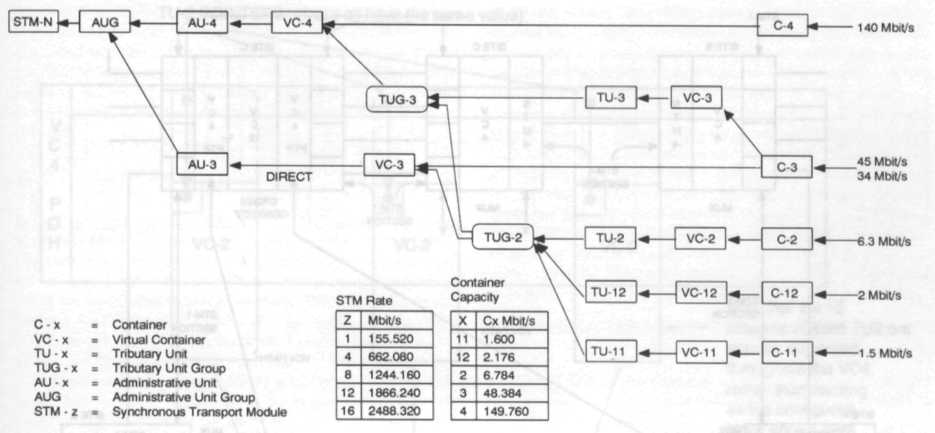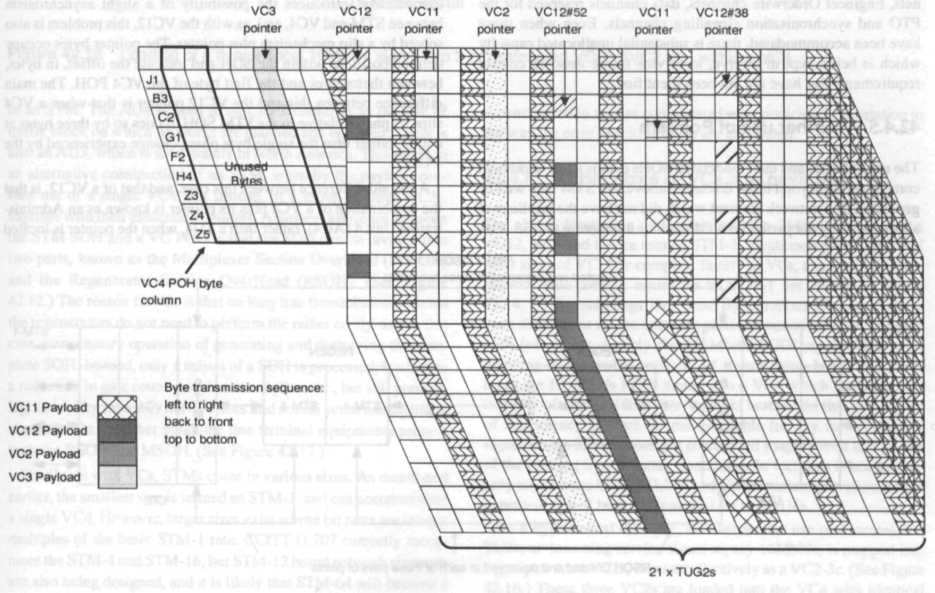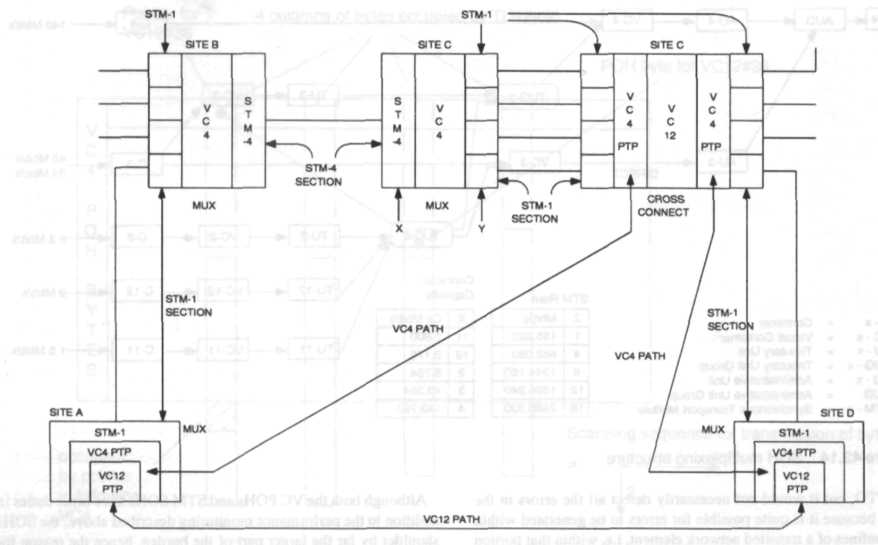
- •42 The Synchronous Digital Hierarchy (sdh)
- •42.1 Introduction
- •42.2 Pdh deficiencies
- •42.3 The basis of sdh
- •42.3.1 The concept of pointers
- •42.4 The sdh standards
- •42.4.1 Path OverHead information
- •42.4.2 Multiplexing of Virtual Containers
- •42.4.3 Channels and Tributary Unit Groups
- •42.4.4 Vc4 Into a Synchronous Transport Module
- •42.4.5 Further use of Pointers
- •42.4.6 Other sizes of vCs and payloads
- •42.4.7 Sonet and sdh
- •42.4.8 Nni Optical Interface standardisation
- •42.4.9 Sdh network elements
- •42.5 Control and management
- •42.6 Sdh based networks
- •42.6.1 Sdh network topologies
- •42.6.2 Deployment strategies
- •42.7 Impact of broadband standards
- •42.7.1 Frame Relay
- •42.7.2 Switched Multimegabit Data Service (smds)
- •42.7.3 Fibre Distributed Data Interface (fddi)
- •42.8 Future technologies
- •42.8.1 Integrated circuits
- •42.8.2 Optical interfaces
- •42.8.3 Optical amplifiers
- •42.8.4 Optical switching
- •42.8.5 Memory and processing power
- •42.9 Conclusion
42.4.4 Vc4 Into a Synchronous Transport Module
Although a VC4 can have its payload constructed in a variety of ways, its POH conforms to the same principles as those of a VC12 i.e. it is generated and attached at the point where the C4 is loaded, and remains unchanged until the C4 is unloaded at its destination. As with the VC12, the VC4 POH is capable of indicating that errors have been introduced into the VC4 payload during its journey, hut it is not capable of identifying which network element was responsible. This problem is solved by the addition of yet another set of overhead bytes to the VC4, known as the Section Overhead bytes (SOH). The combination of the SOH plus the VC4 is termed a Synchronous Transport Module (STM), but another way of looking at this structure is to regard the VC4 as fitting neatly into the payload area of the STM. (See Figure 42.12.) Like the VC4, the STM repeals every 125μs. In order to appreciate the structure of an STM, and particularly the SOH, it is best to revert to using the two dimensional representation of a block of bytes. Figure 42.12 shows the standard representation of the smallest STM, known as an STM-1, which has 9 rows of 270 bytes each. This produces a transmission rate of 155.520Mbit/s.
The significance of the STM SOH is that, unlike the VC4 POH, is it generated afresh by every network element that handles the VC4. This handling of the VC4 includes the operations of creating, multiplexing or routing within the network, even if such multiplexing or routing happens to be completely inflexible (e.g. hardwired). When a network element (i.e. line terminal, multiplexer or cross connect) receives an STM, it immediately examines the relevant bytes of the SOH to determine whether any errors have been introduced into the payload i.e. the VC4. Unless this particular network element happens to contain the VC4 path termination point, it subsequently calculates a new, replacement set of SOH bytes which are then attached to the VC4 for onward transmission to the next network element. (See Figure 42.16.)
This section by section monitoring gives the PTO a powerful tool for locating the source of any poor performance within his network, and compliments the capabilities of the VC POHs, which are solely concerned with end to end, rather than section by section (i.e. network element to network element) issues. It could he argued that the POH monitoring is redundant, because the end to end path performance could be synthesised from the individual section indications. However, not only would this he difficult to do, especially if the VC4 journey happened to traverse the networks of more than one PTO, hut it would not necessarily detect all the errors in the VC4, because it is quite possible for errors to be generated within the confines of a transited network element, i.e. within that portion of a network element between where the old SOH has been removed, and a new one has been added, e.g. between X and Y of the Mux at site C in Figure 42.16.
Although both the VC POHs and STM SOHs have other duties in addition to the performance monitoring described above, the SOHs shoulder by far the larger part of the burden, hence the reason for the much larger number of bytes in the SOH than, for instance, in a VC4 POH. (See Figure 42.12.) These additional duties include STM alignment function, the carriage of the network management channels, Engineer Orderwire channels, data channels reserved for the PTO and synchronisation signalling channels. Even when these have been accommodated, there is substantial unallocated capacity which is being kept in reserve, to service future network control requirements that have not yet been identified.


Figure 42.15 Partially filled VC4 with TU structured payload

